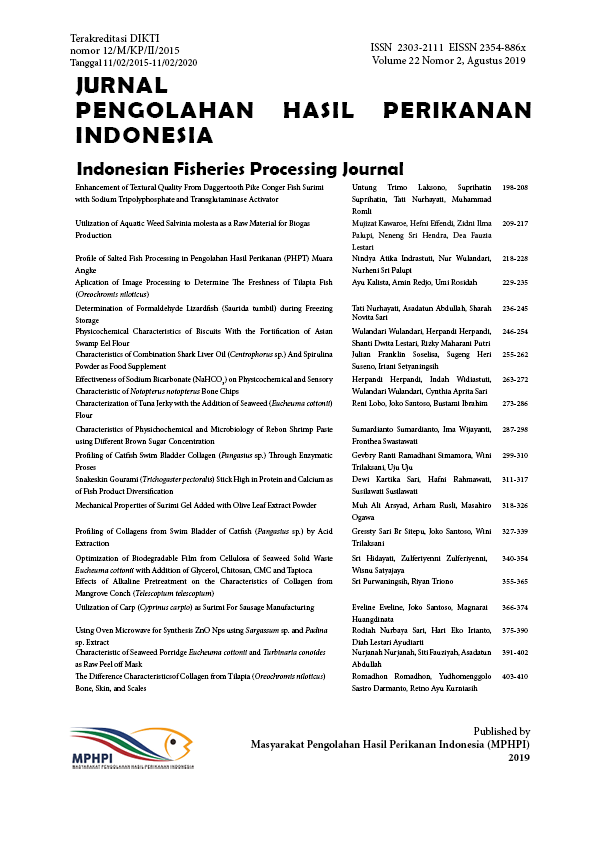Profile of Salted Fish Processing in Pengolahan Hasil Perikanan (PHPT) Muara Angke
Abstrak
The quality of salted fish depends on the quality of raw material as well as the processing methods. The aim of this work was to study the processing profile of the salted fish in PHPT Muara Angke. Data was collected from the annual salted fish production data in Muara Angke from January 2017 to July 2018, as well as from observation and interview with 25 salted fish producers using snowball sampling method. The results showed that the processed fish species were very diverse and the processing was carried out using traditional methods. Frozen fish were used more frequently than the fresh one. The ground water and crystal salt were used in the processing.Pickling was widely used for salting method rather than dry salting or wet salting. Drying of the fish was carried out traditionally under the sun. However, bleaching agent was still used by some producers. In conclusion, the processing of salted fish in PHPT Muara Angke has not applied
sanitized and hygiene production processes.
sanitized and hygiene production processes.
Penulis
IndrastutiN. A., WulandariN., & PalupiN. S. (2019). Profile of Salted Fish Processing in Pengolahan Hasil Perikanan (PHPT) Muara Angke. Jurnal Pengolahan Hasil Perikanan Indonesia, 22(2), 218-228. https://doi.org/10.17844/jphpi.v22i2.27363
##submission.howToCite.downloadCitation##
##plugins.generic.citationStyleLanguage.download.ris##
##plugins.generic.citationStyleLanguage.download.bibtex##
##submission.license.cc.by4.footer##
Authors who publish with this journal agree to the following terms:
- Authors retain copyright and grant the journal right of first publication with the work simultaneously licensed under a Creative Commons Attribution License that allows others to share the work with an acknowledgement of the work's authorship and initial publication in this journal.
- Authors are able to enter into separate, additional contractual arrangements for the non-exclusive distribution of the journal's published version of the work (e.g., post it to an institutional repository or publish it in a book), with an acknowledgement of its initial publication in this journal.





